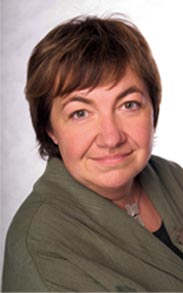What makes a CENTRE great is what SURROUNDS it
Province and Metropolis, Metropolis and Province.
At a first glance, it would appear to be quite clear today where the metropolis ends and the provinces begin. But the further you go back into history, the harder it is to locate this boundary. The birth of the Mark Brandenburg (March of Brandenburg) dates back to 1157. As opposed to this, the first mention of “Cölln”, the oldest part of Berlin, arises only 80 years later. The province of Brandenburg has been referred to as a part of Prussia since 1815. Sometimes the capital was Potsdam, sometimes it was Berlin.
Who or what triggered its development into a metropolis and forged its intellectual spirit? Where did the main protagonists come from and how did the places they came from influence them? What valuations and aspirations do people associate with the apparent extremes of the provinces and the metropolis? Is one conceivable without the other? Are terms like “provincial” and “cosmopolitan” still appropriate or have they become obsolete?
The seven cities of the Städtekranz, i.e. ring of cities, are distributed throughout the Brandenburg region with Berlin as their geographical nucleus. Each of them has its own point of view and its own confident interpretation of the province/metropolis duality.
The industrial history of Brandenburg an der Havel leads to Berlin and back again to the city on the river Havel. The fact that one of Germany’s most renowned humorists – Vicco von Bülow, also known as Loriot – cherishes his ties with his birthplace Brandenburg an der Havel is a charming declaration of love to the Prussian provinces. Equally, there is always something to be learned by following sophisticated Prince Pückler to Cottbus/Branitz and then returning with him to the salons of Berlin which would have been much poorer and less important places without him. And Prince Pückler is just one of many men from the provinces who made a significant contribution to metropolitan life. The Berlin Academy of Forestry was transferred from Berlin to Eberswalde, the city in which the forest is an integral part of the territory. The Humboldt brothers were among the initiators of this move. Berlin’s first university was founded by Wilhelm von Humboldt, one of the two brothers, both of whom studied in Frankfurt (Oder). Does anyone actually know that the Viadrina, the University of Frankfurt (Oder), is over 300 years older than Berlin university? The city of Jüterbog was saddled by Berlin with the task of creating a huge military training ground in its suburbs. And today, one of Germany’s biggest conversion projects is being carried out there. A settlement established in the Gildenhall district of Neuruppin around 1920, many of whose founders originated from Berlin, put into practice a way of life that could justifiably be described as utopian. The community also left numerous visible traces of its arts and crafts activities behind in the city centre. Luckenwalde was the city in which the young Berlin architect Erich Mendelsohn, who later became world famous, constructed his first masterpiece, a hat factory.
Rudi Dutschke moved from Luckenwalde to (West) Berlin in 1960 where he became one of the figureheads of the 1968 student movement. These and other personalities and their actions are publicly commemorated by the MARKERS (MERKZEICHEN).
Esteemed guests,
Travel around our province, follow – in the truest sense of the word – our recommendations and please remain open to all of the other attractions you will encounter on the way.
I would like to wish you a lot of fun and delight in the discoveries you will make on your walks!
Yours,
Elisabeth Herzog-von der Heide
Mayor of the City of Luckenwalde and
Chairwoman of the Städtekranz Berlin-Brandenburg
